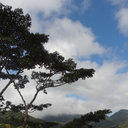Responses of nutrients and mobile carbohydrates in Quercus variabilis seedlings to environmental variations using in situ and ex situ experiments.
Maneno muhimu
Kikemikali
Forest tree species distributed across a wide range of geographical areas are subjected to differential climatic and edaphic conditions and long-term selection, leading to genotypes with morphological and physiological adaptation to the local environment. To test the ability of species to cope with changing environmental conditions, we studied the ecophysiological features of Quercus variabilis using seedlings grown in geographically widely isolated populations (Exp. I, in situ) and in a common garden (Exp. II, ex situ) using seedlings originating from those populations. We found that Q. variabilis plants grown in different locations along a south-north gradient had different levels of nutrients (N, P, K) and carbon-physiological performance (photosynthesis, non-structural carbohydrates, such as soluble sugars and starch), and that these physiological differences were not correlated with local soil properties. These geographic variations of plant physiology disappeared when plants from different locations were grown in the same environment. Our results indicate that the physiological performance of Q. variabilis plants is mainly determined by the climatic variations across latitude rather than by their soils or by genetic differentiation. The adaptive ability of Q. variabilis found in the present study suggests that this species has the potential to cope, at least to some extent, with changing environmental conditions.




